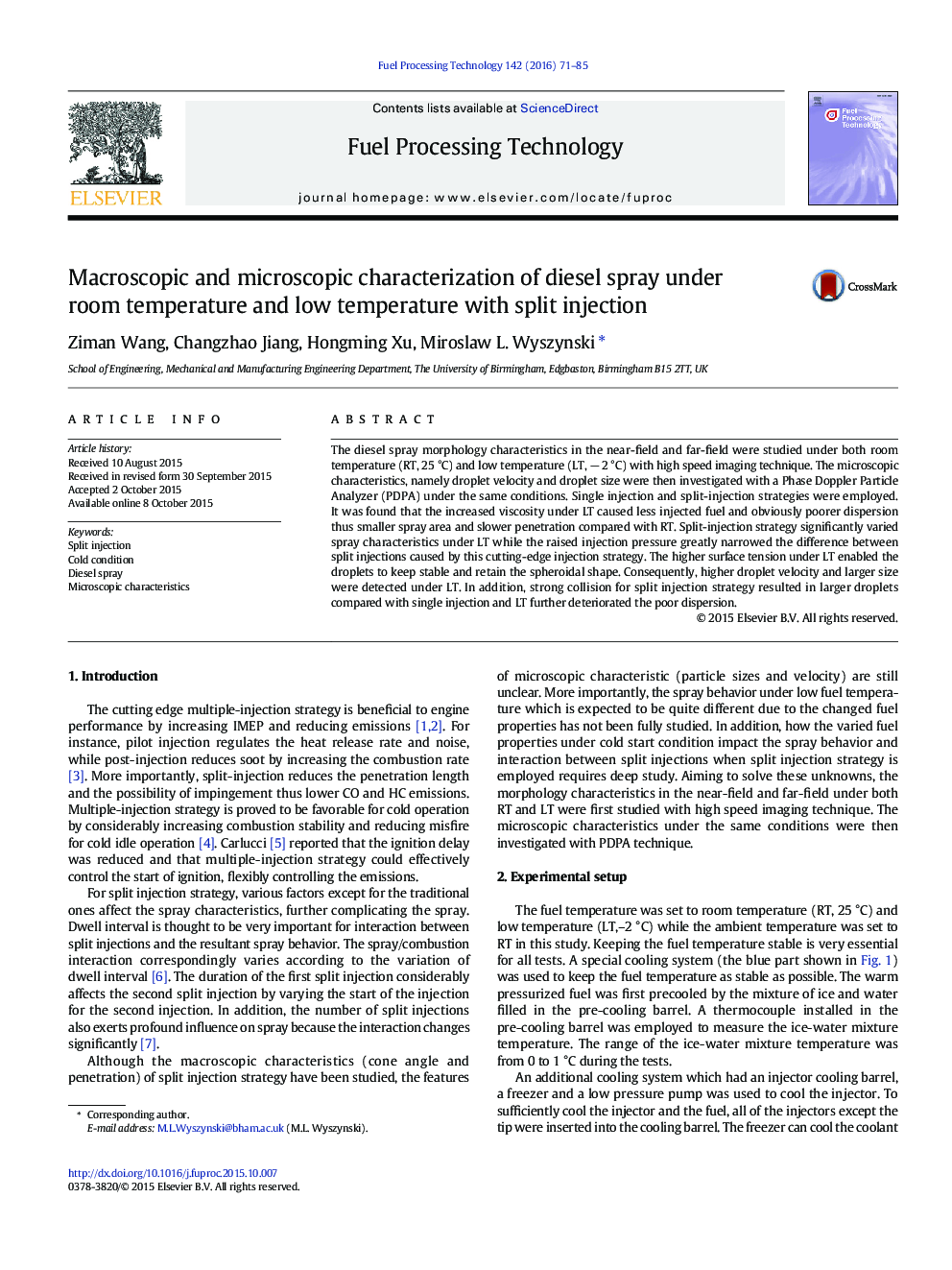| Article ID | Journal | Published Year | Pages | File Type |
|---|---|---|---|---|
| 6656692 | Fuel Processing Technology | 2016 | 15 Pages |
Abstract
The diesel spray morphology characteristics in the near-field and far-field were studied under both room temperature (RT, 25 °C) and low temperature (LT, â 2 °C) with high speed imaging technique. The microscopic characteristics, namely droplet velocity and droplet size were then investigated with a Phase Doppler Particle Analyzer (PDPA) under the same conditions. Single injection and split-injection strategies were employed. It was found that the increased viscosity under LT caused less injected fuel and obviously poorer dispersion thus smaller spray area and slower penetration compared with RT. Split-injection strategy significantly varied spray characteristics under LT while the raised injection pressure greatly narrowed the difference between split injections caused by this cutting-edge injection strategy. The higher surface tension under LT enabled the droplets to keep stable and retain the spheroidal shape. Consequently, higher droplet velocity and larger size were detected under LT. In addition, strong collision for split injection strategy resulted in larger droplets compared with single injection and LT further deteriorated the poor dispersion.
Related Topics
Physical Sciences and Engineering
Chemical Engineering
Chemical Engineering (General)
Authors
Ziman Wang, Changzhao Jiang, Hongming Xu, Miroslaw L. Wyszynski,
